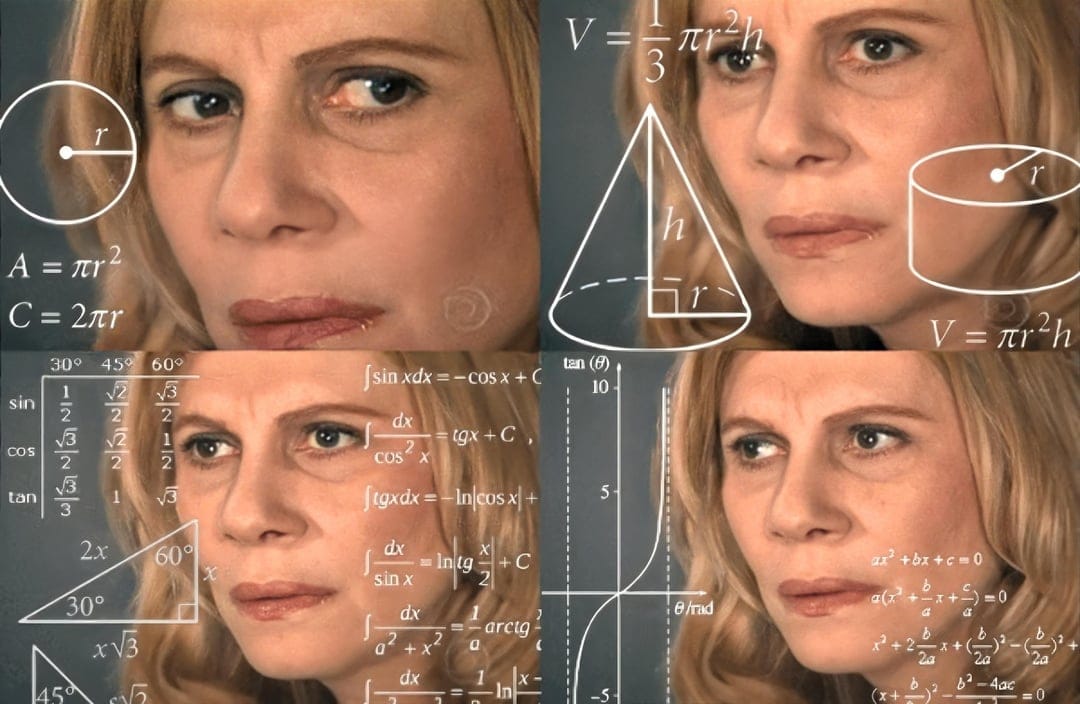Open Access ≠ Open Access - Navigating the License Alphabet
Publishing Open Access (OA) has always been something important to me. It stems from my utopian belief that science should be for everyone and that the funders (taxpayers) should have access to it. Most of my publications are Open Access, something I was somewhat proud of as a novice researcher.
However, after a wonderful discussion with my local librarians about OA publishing, the point of licenses came up.
“Publishing licenses is one thing we wished researchers knew more about. They are extremely important for Open Access publishing” they said.
As I heard that, I was humbled, because I did not know much about them. I had heard of them. But beyond the name “Creative Commons”, I knew nothing.
After that wonderful talk I rushed back to my desk to check under what licenses our works were published. I was directly confronted with different symbols that had no meaning to me:



This is how I stared at my screen:

CC-BY, CC-BY-NC-ND, CC-BY-SA, …. I was faced with an alphabet soup I had no idea how to decode. What bothered me the most was my ignorance towards the topic of licenses. Discussing with friends and colleagues made me realize I was not the only one. Some had more knowledge, some had less, but no one had a deep understanding of them. It is not our fault, in my opinion. We were never taught these in our pre-PhD life.
So I decided to look into them, hopefully offering an insight into this mambo-jumbo of letters that make up Open Access Publishing.
So join me in the exploration of the publishing license alphabet soup:
But first… What’s a License Anyway?
Think of a license as a set of permissions for your work. It says, “Hey world, you can use my research (or not), but here are the rules”. They are like the fine print at the bottom of a contract—often overlooked but critically important. In the world of academic publishing, they determine how your research can be used, shared, or reused. Pretty important if you ask me.
The Creative Commons License Cheat Sheet
Let’s break it down, license by license, so you know what you're signing up for—or in which corner you are being pushed into. A deeper explanation as well as big help and inspiration from this post comes from the Wikimedia page about Open Content [1].
CC: The license family
CC is the first part of our alphabet. These are the most common licenses in academic publishing and come from the Creative Commons (CC) family [2], and each one spells out exactly what others can (or can’t) do with your paper, book or anything you publish open access.
1. CC-BY: The Gold Standard
”BY” stands for “By Attribution”. The best type of license all academics should strive for. It gives your work the biggest range. Anyone can reuse, modify, or share your work (even commercially) as long as they give you credit. It’s the most open license, perfect for fostering collaboration. Scientists, educators, and even entrepreneurs can take your ideas and run with them—while still giving you credit. Funders and many agencies love CC-BY because it aligns with open science goals. If you want your research to have impact, give other ideas for an even better future, this is the license to choose.
2. CC-BY-SA: Sharing Is Caring
”SA” stands for “Share Alike”. This means that anyone who modifies your work must use the same license for their own version. It’s nice but a bit annoying. It’s great for promoting openness but can scare off commercial players who don’t want to share their work openly…so a bit restrictive. The biggest example of CC-BY-SA that everyone knows is Wikipedia. Which is why its content can be freely reused—but only under the same terms. Kind of like a “I am being generous, but I am forcing you to be generous”.
3. CC-BY-NC: Not for Profit
”NC” stands for “Non Commercial”. It allows reuse of the work as long as it’s not for commercial purposes. So your work should not be reproduced if someone wants to make money off of it. It is a bit tricky because it begs the question: “What counts as “commercial”?” A start-up? A non-profit selling a textbook? The ambiguity can limit legitimate uses of your research. Publishers often push this license, but it’s less impactful than CC-BY because it restricts how your work can circulate. Here it really depends on the type of research as well. Some deeply fundamental research might not have commercial value. This might be different for more applied or educational research.
4. CC-BY-ND: Hands Off My Work
”ND” stands for “No Derivatives”. It allows others to share your work, but only in its original, unmodified form. This is quite restrictive, especially in research, in my opinion. Science thrives on building upon others' ideas. With ND, nobody can adapt your work—not even to translate it or use parts of it in new research (unless they acquire permission and exceptions from the publisher). Publishers love putting this license on OA papers to keep tight control over what others can do. It’s kind of like “Sharing is Caring. But just look, don’t touch”.
5. CC-BY-NC-SA: A Little Too Protective
This license combines NC (Not for Profit) and SA (Sharing is Caring). People can share, modify and reuse your work for free but must keep their versions open and non-commercial. Few researchers or organizations can actually use it in practice.
6. CC-BY-NC-ND: The License of Doom
This is the strictest of them all and combines most restrictions—no commercial use, no modifications, just sharing as-is. This license is problematic because it gives the false image of OA. It is barely open. Basically “Just look, but hands off completely”. It makes your work a dead end if anybody wants to do something with it. Publishers and many OA Journals love pushing this one because it keeps your research visible but not really reusable. It is very much more like open-ish access.
7. CC0: No Strings Attached
This license dedicates your work to the public domain. You’re giving your work away with zero restrictions, not even attribution. The biggest altruistic move you can make with your work. It is extremely rare in the world of science because most researchers (rightfully) want credit for their work. CC0 is incredibly open but not ideal if you value recognition. Maybe one day if the burden of ego disappears, this license might be more common? But who knows what people might do with it.
Long story short: licenses directly impact the reach and utility of your research.
While CC-BY opens doors, restrictive licenses like CC-BY-NC-ND slam them shut. Publishers know this, and they exploit it to keep control over research—even when you’ve paid them hefty Article Processing Charges (APC) for open access. Let’s not sugarcoat it—publishers know how to game the system and have ways of making sure they get the most out of them. Here are a few of them:
- Defaulting to restrictive licenses: Unless you’re paying attention, they’ll often slap a CC-BY-NC-ND (License of Doom) on your paper, limiting its usefulness while charging you thousands in APCs.
- Double-dipping: Hybrid journals charge APCs for OA but still sell subscriptions. Your institution pays twice.
- Text and data mining restrictions: Even when your paper is “open,” they bury terms in the license that block large-scale computational reuse. This is a polarized topic right now as LLMs are still black boxes and it is unknown if these license restrictions are actually respected or not.
- Hiding the costs of openness: They’ll frame more open licenses like CC-BY as “premium options” with inflated APCs, pricing many researchers out. If CC-BY is too expensive, you might think that CC-BY-NC-ND (License of Doom) is a good option if it is cheaper…but it’s not very open.
I personally have fallen into the trap. I was over the moon getting an educational methods paper published in OA. This was before I looked into all of this and, without all this knowledge, I did not think twice about it. I thought OA=OA. I was wrong.
Checking again, I realized that our work is published under the license of doom: CC-BY-NC-ND. I was quite disappointed at myself when I realized this. We wanted our work to reach the most people possible and be used to improve knowledge and reproducibility in the field. I find comfort in the fact that it is still open-ish and that at least everyone can still see it and learn from it free of charge. I regret though that the license restricts the creation of any course material with it or any public presentations. Now I know better and will learn from my mistake.
This misstep on my side begs the question:
How can we all do better with this license alphabet soup?
The first step is getting this into curricula for early graduate programs. I am happy that some universities are starting to implement this but it needs to become more widespread.
The second step is knowing your rights. Educate yourself on the different types of licenses. Read the fine print. Ask your local librarians about these licenses and how your institute goes about with them. In the words of my wonderful librarians “CC-BY is the best—it’s the a good balance of openness and recognition.”
The third would be to try and have open discussions about OA publishing in your group among peers and colleagues and, if you are a PhD student like me, with your professor. The more we demand openness, the harder it is for publishers to exploit the game.
Finally: push back. Many funders require CC-BY (check grant and institution requirements if you can), so use this to your advantage when negotiating with peers, collaborators or journals directly.
Let’s be honest. For most researchers, licenses might seem boring. You might think: “I just want to do my science, why should I care?”.
But let us not forget: Licenses are the backbone of how knowledge spreads—or gets locked up. So the next time you submit a paper, do not make the same mistake I made. Take a moment to think about what kind of license you’re agreeing to. Take that extra step. It could be the difference between your research thriving and inspiring the next person pushing back the boundaries of knowledge or gathering electronic dust.
If you want to learn more about licenses, here are some other resources to explore them in more detail. Let us add this alphabet soup to our brain and hopefully get the most out of it.
[1] A Practical Guide to Open Content Wikimedia Page
[3] Deal Konsortium - The Alliance of Science Organisations has initiated the DEAL project to negotiate new contractual models with journal publishers that enable the open dissemination of research results from Germany.
[4] For German readers: DEAL =/= Diamond OA
[5] For German readers: OA finder. Where can you publish my article or book in OA?.
P.S. Your local librarians are a well of knowledge you should take advantage of. I want to send out a big thank you to mine, who took the time to sit down with me and discuss a lot of this mambo jumbo. You are awesome.

Comments ()